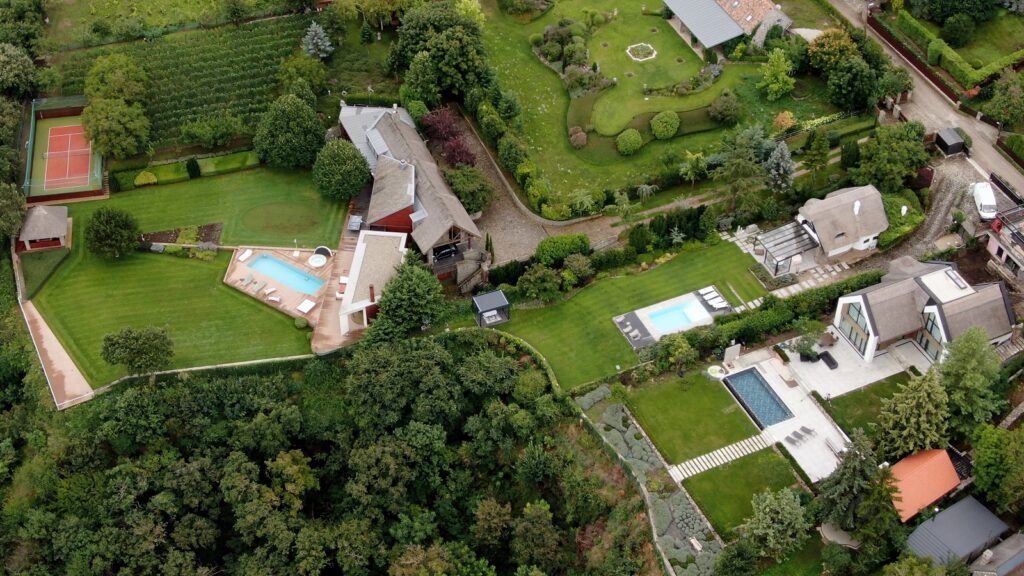The https://english.atlatszo.hu use cookies to track and profile customers such as action tags and pixel tracking on our website to assist our marketing. On our website we use technical, analytical, marketing and preference cookies. These are necessary for our site to work properly and to give us inforamation about how our site is used. See Cookies Policy
The most expensive farms in Hungary: this is what agriculture looks like in Tihany
Three streets at the top of Tihany. They are not particularly ostentatious, and the asphalt is not particularly good. Yet they do stand out. They have the lowest number of residential pools per capita and the highest number of luxury pools per capita. In suburban areas classified as agricultural, it is rare to find agricultural buildings of the quality of those in Tihany, located on the northern shore of Lake Balaton.
On the street frontage of the Alsó Óvári, Óvári, and Felső Óvári streets, zoned Mk2 (garden agricultural area) and Má-Ko2 (general agricultural – restricted area), you wouldn’t even notice what the back gardens of the decently built houses hide. Although nameplates only occasionally show who lives in the houses, press reports in recent years tell us exactly how the former Óvár (‘old castle’) became the favourite holiday destination of the Hungarian government elite.

As we reported earlier, the whole of the Tihany peninsula is part of the Lake Balaton Uplands National Park, where the first landscape protection district was established in 1952. But the Natura 2000 and nature conservation status is no obstacle to building on the peninsula.
The best description of what is happening in the area is the draft modification of the urban planning instruments, which was recently ordered by the municipality of Tihany. The opinion draft, prepared by Völgyzugoly Műhely Ltd states that:
“There are several plots of land in agricultural areas with several buildings or buildings larger than the permitted parameters. The majority of the plots do not exceed 90 m2 , but there are 6 plots of 90-120 m2 , 7 plots of 120-150 m2, and only 6 plots of more than 150 m2 .”
The analysis also shows that there are structures on the site that are not included in the data and that it was possible to see on-site that paved terraces, swimming pools, and garage parking areas have been built, which have greatly reduced the proportion of green areas:
“Examining the 2020 base map data, the properties are mainly farm buildings, with a small number of residential, recreational, and farm buildings. Contrary to the official data, the findings during the site visit indicated that most of the structures in the area may have a residential or recreational function.”
In May 2022, a ban on changes to the agricultural zones was imposed. A public forum was held on 15 August, because it was necessary to change the regulation of the agricultural garden areas, which is not in line with the higher legislation that entered into force in 2018, and therefore required harmonisation.
According to the Local Building Regulations, garden ponds, ornamental ponds, swimming pools and open reservoirs for water for heating purposes, among other things, cannot be placed in agricultural zones. It is no coincidence that the amendments now submitted for public consultation include an extended list of such areas, according to which the following may not be placed in such areas: ‘open water areas, garden ponds, ornamental ponds, swimming pools, open reservoirs for fuel water, reservoirs for landscape management’.
That is why Mrs. Rogán 2, i.e. Cecilia Rogán-Gaál, was forced to cover her pool. The house, built without a permit, stands out from the classic Balaton houses with thatched roofs and stone facades. Although there are some vines in some places, fruit trees do not shade the pools, even though the property deeds most often show an orchard and farm building or a vineyard and farm building.

Vineyard and farm building in the name of Csaba Attila Faragó and Mária V. He is the former CEO of HírTv and ÁPV Rt., and has held leading positions in Dunaferr Rt. and MFB Rt. Faragó, who also served as Ambassador Extraordinary and Plenipotentiary to Singapore, has 2,764 square metres of vines in a protected area, but there is an interestingly shaped fire water reservoir.

Peter O. is the owner of a prosperous business, which has also received significant state subsidies, and an entrepreneur who bought the 1,638 square metre property, classified as a meadow and farm building, in 2017.
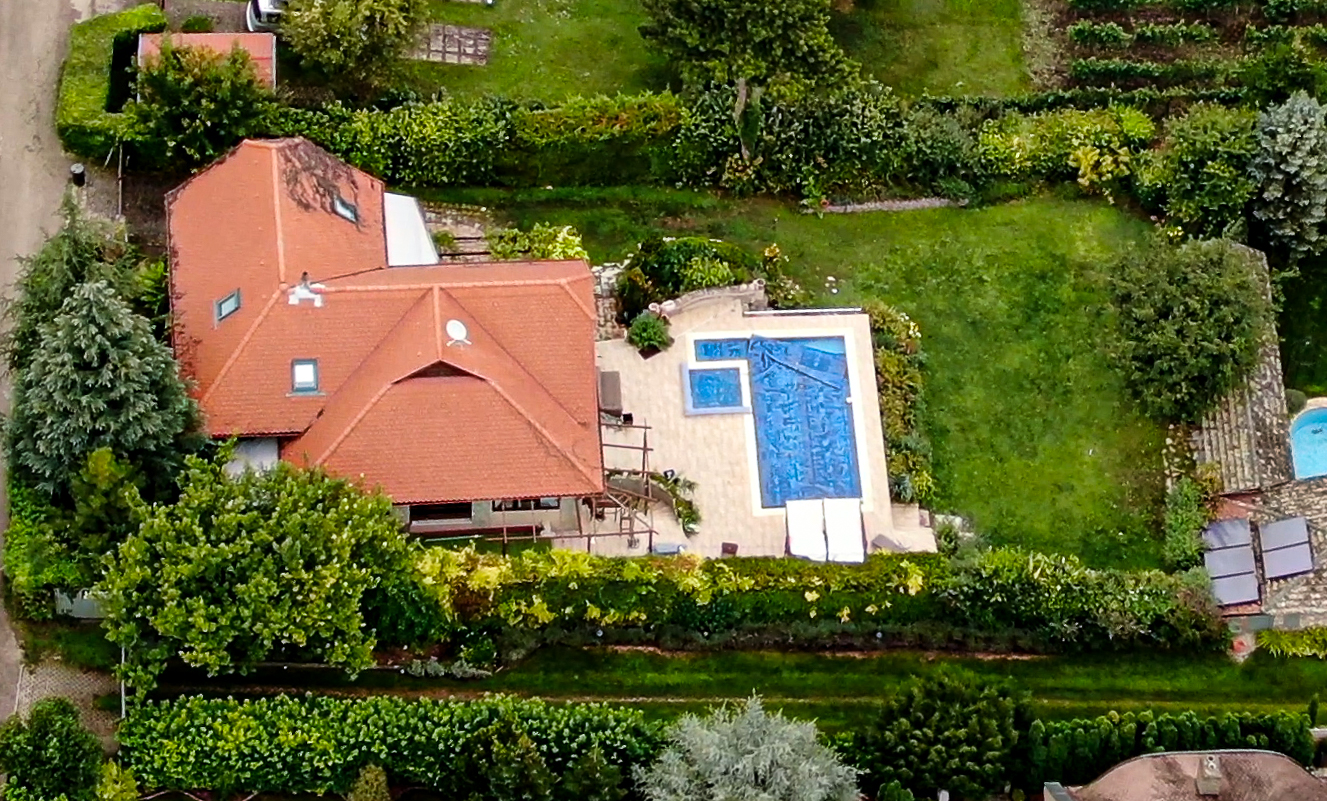
Entrepreneur Ferenc K. is part owner of a wellness hotel, who bought the 946 square metre property, classified as a farm building, yard, in 2007. In 2010, a farm building was registered on it, and, not surprisingly, it also includes an impressive fire water reservoir.
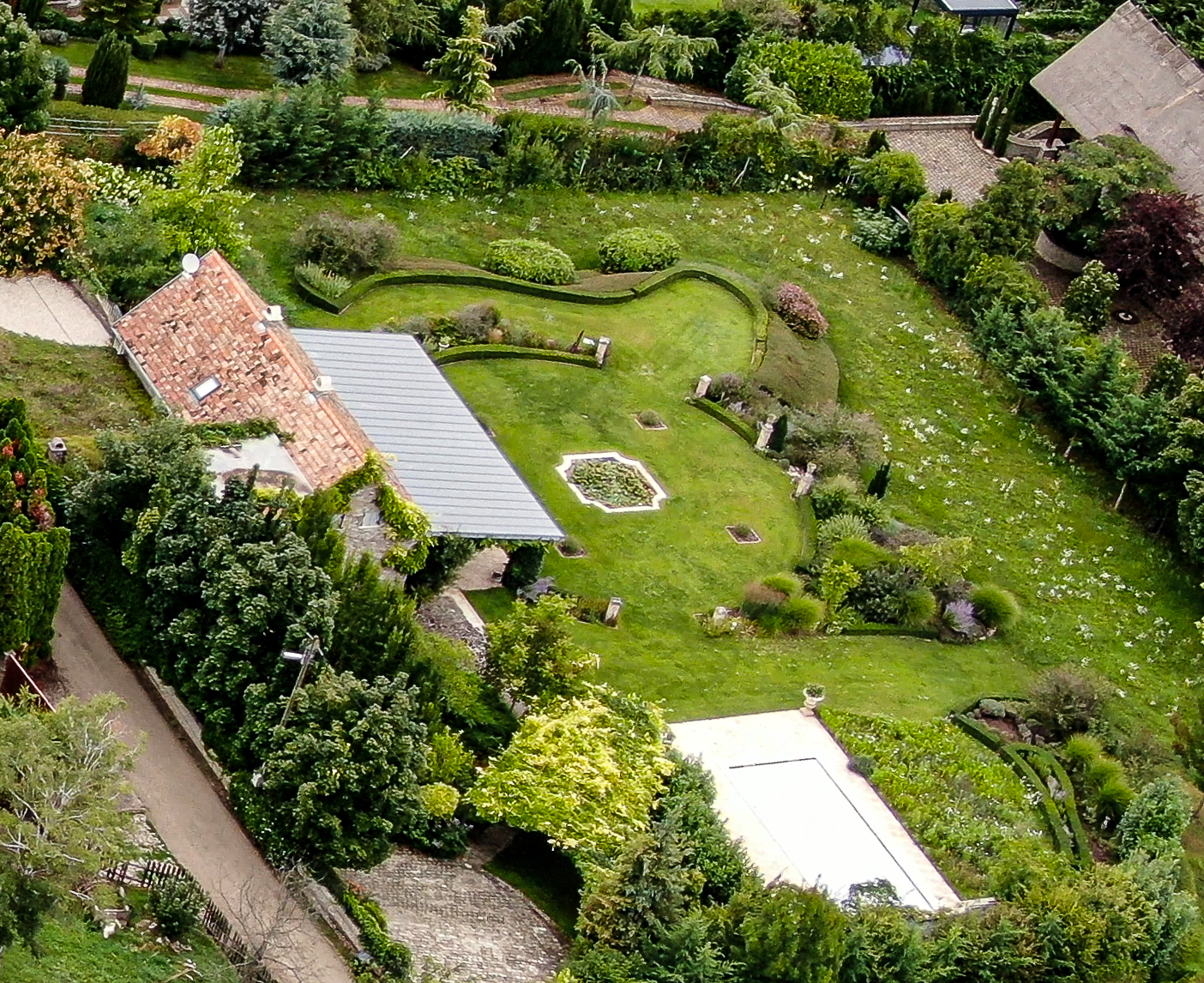
The owner of the 3,346 square metre vineyard and farm building is Anna K. – formerly a senior executive of a major telecommunications operator was also listed as a co-owner in the registers.
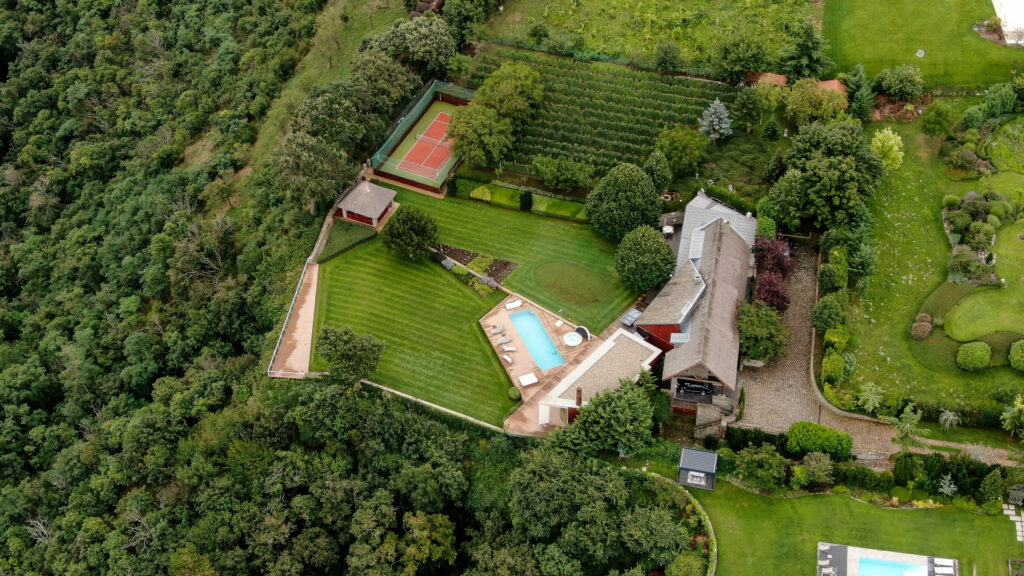
Lajos D. has owned a vineyard of around 5000 square metres since 1999. The property, which has an impressive firewater storage and tennis courts, was the subject of a land conversion procedure in July this year.
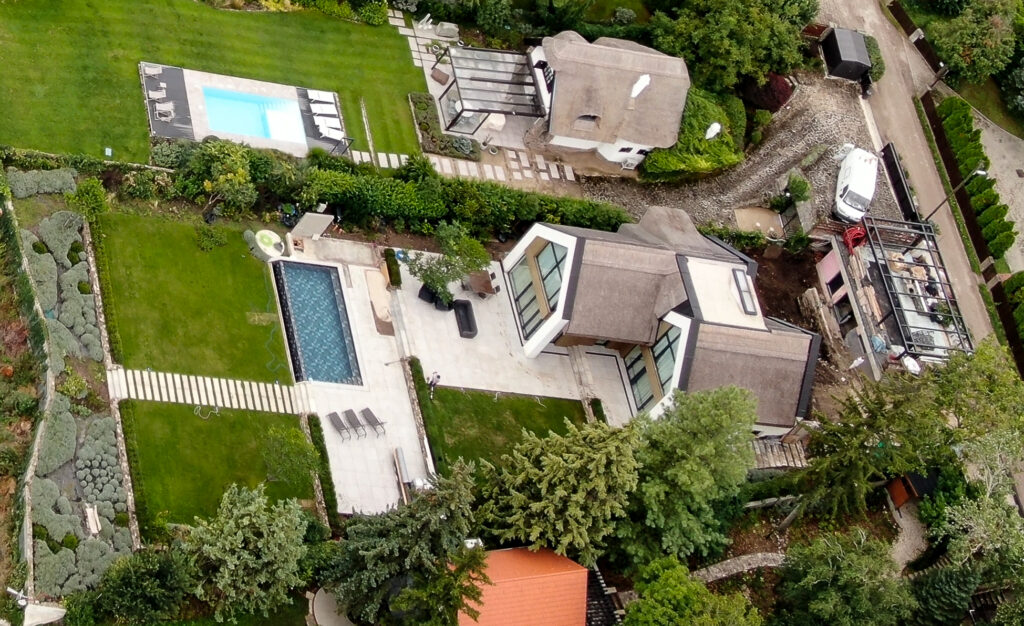
Dr. M.F.F. owns a 1,500 square metre garden, classified as a communal plot and a cellar of a press house, which he bought in 2018. The press house, which cannot be called small, attracts attention with its modern form.

Balázs Dzsudzsák has no reason to complain either, although his vineyard and farm building is only 1,275 square metres, it seems to have a firewater reservoir. For readers who do not follow football, Balázs Dzsudzsák is a successful footballer, a multiple national team player, former captain of the Hungarian national football team, has played for several foreign clubs and is considered the highest-paid Hungarian sportsman.
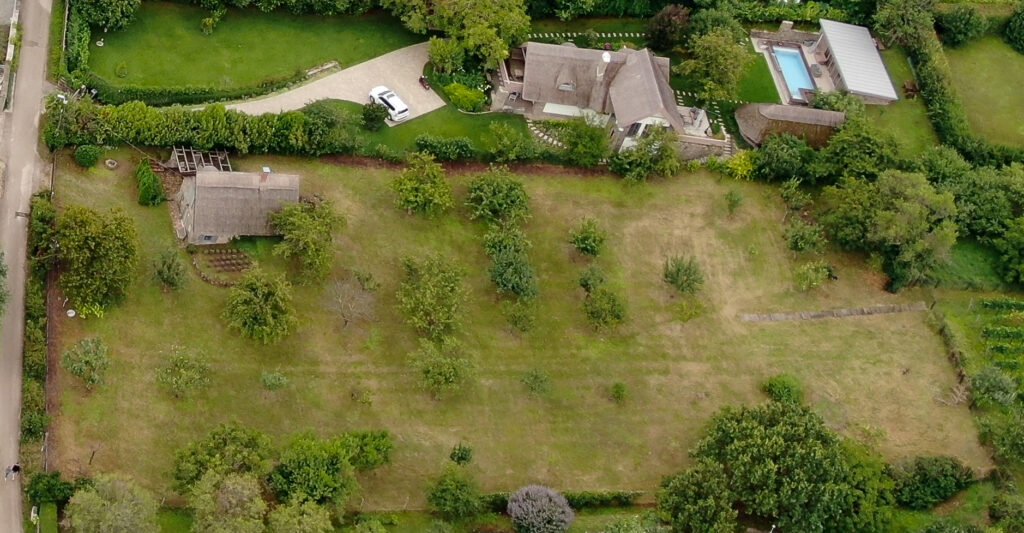
One of Dr. Andrea Ficzere’s properties, classified as an orchard and farm building, is 2,141 square meters, which she bought in 2018 and in April 2023 she bought a 3,172 square meter orchard with a farm building for HUF 366.6 million. On the basis of the sale and purchase agreement, it will fulfill its land use obligations on the purchased land. The owner is the Director General of Uzsoki Utca Hospital and Vice President and former President of the Hungarian Hospital Association, and in 2023 he was awarded the Civilian Member of the Hungarian Cross of the Order of Merit in recognition of his competent and dedicated medical and hospital management activities.
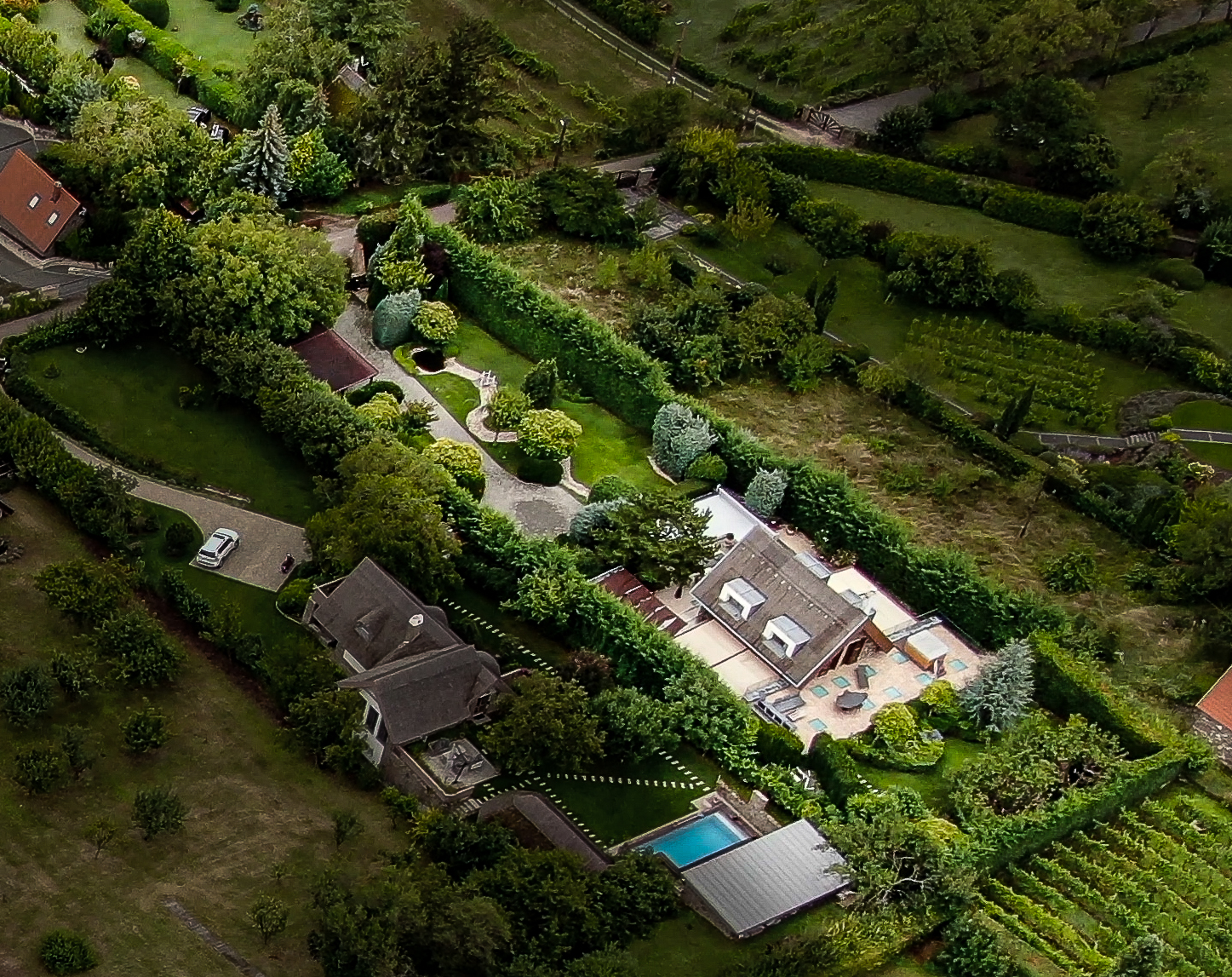
The beautifully restored estate is used by the Mészáros family. The orchard, farm building and cellar are 2141 square metres. Lőrinc Mészáros and Beatrix Csilla Kelemen bought it in 2020 from János Eppel, President of VOSZ, and then the Mészáros children. Lőrinc also received a share of the property. It is difficult to guess how much the land might be worth, but a good starting point is that a mortgage of HUF 250 million was registered in 2014 – this was cancelled in 2020, before the sale.
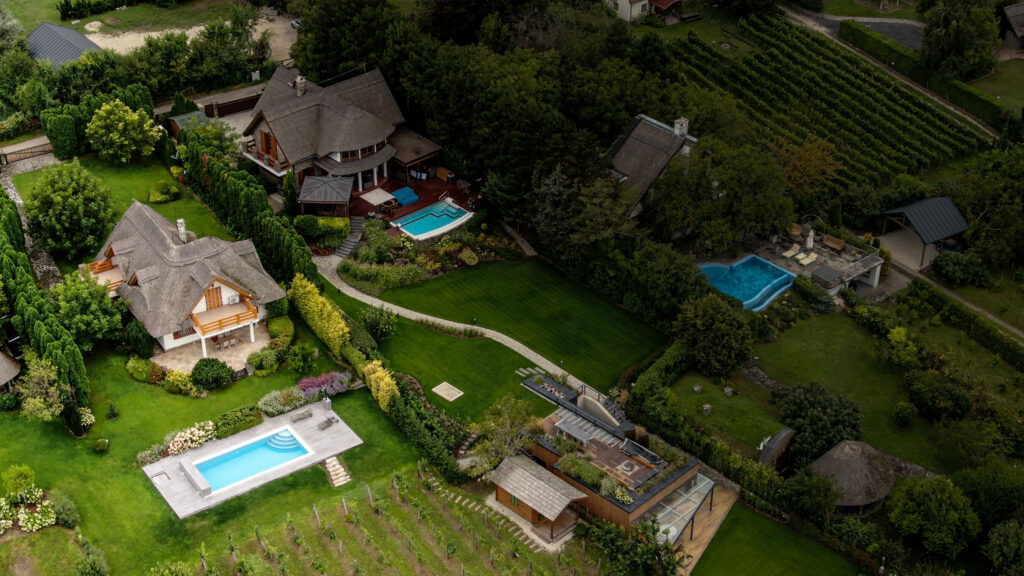
The property of Eva C. Once owned by István Bujtor, then after his wife’s death, the vineyard of 3266 square metres was bought by its current owner in 2015 and currently includes a large house and a firewater reservoir.
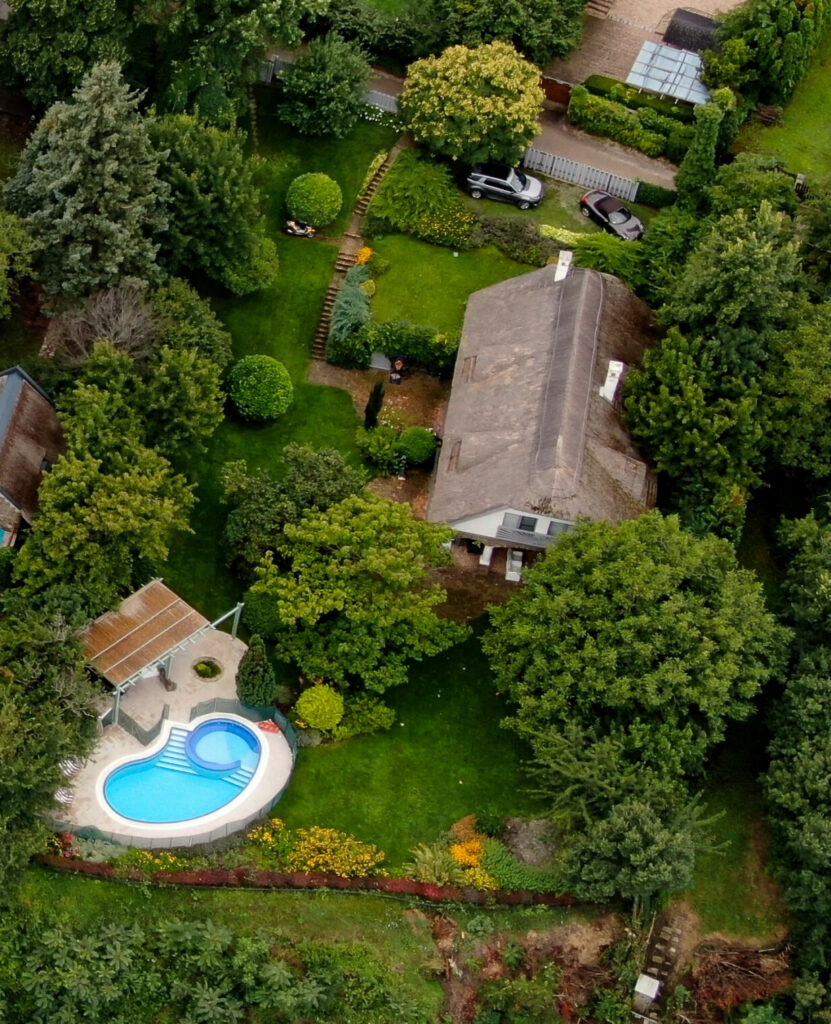
Dr. Gusztáv János Bienerth likes organic forms, as his orchard has a firewater reservoir in this style. He and his wife bought the 1,746 square metre plot in 1996, and in 2005 it was put into his name. The businessman, former government commissioner for tourism, sports official, and former president of the Hungarian Swimming Federation, a post he held for only a few months, is now a board member of FTC Zrt.
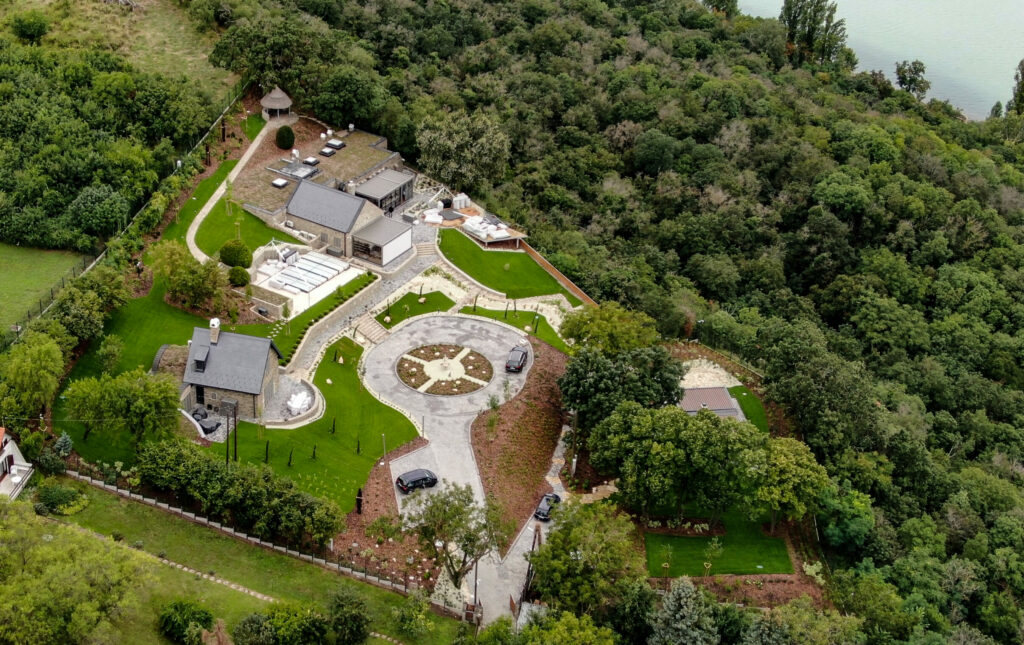
Lőrinc Mészáros Jr. owns this 5484 square metre meadow and farm building, which also has fire water storage. The land is partly owned by ART-COM Ltd., which is owned by EKHO Private Equity Fund. In 2022 and 2022, the entire area was purchased by Mr. Mészáros, who was previously part-owner of the land.
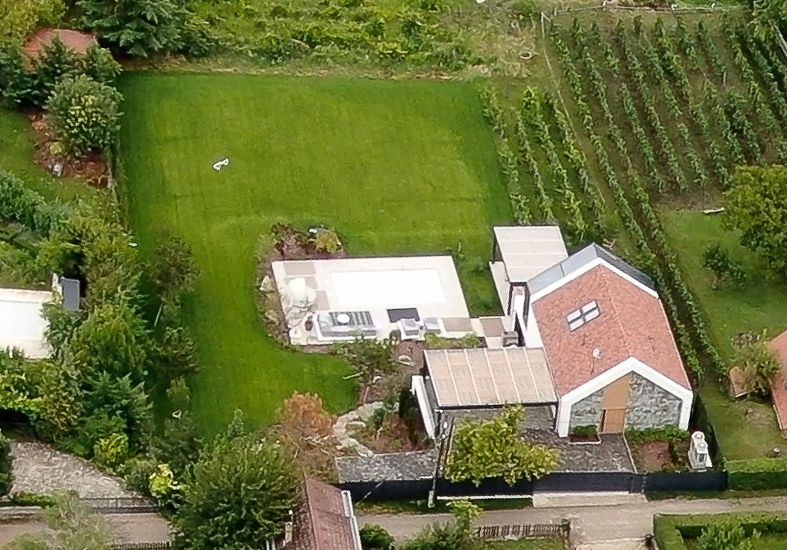
Cecília Rogán-Gaál was the second wife of Antal Rogán, Minister of Propaganda. A businesswoman who can make any company prosper, she married tennis coach Dániel Szendrei in Tihany in 2020. The same year she bought her holiday home, which she demolished and replaced with a new house. The construction, covered with tarpaulins, was blocked by the Veszprém County Government Office in 2022, imposing a heritage protection fine. Since then, the house has been built, the pool has been covered, and the covering has been removed from the fence.
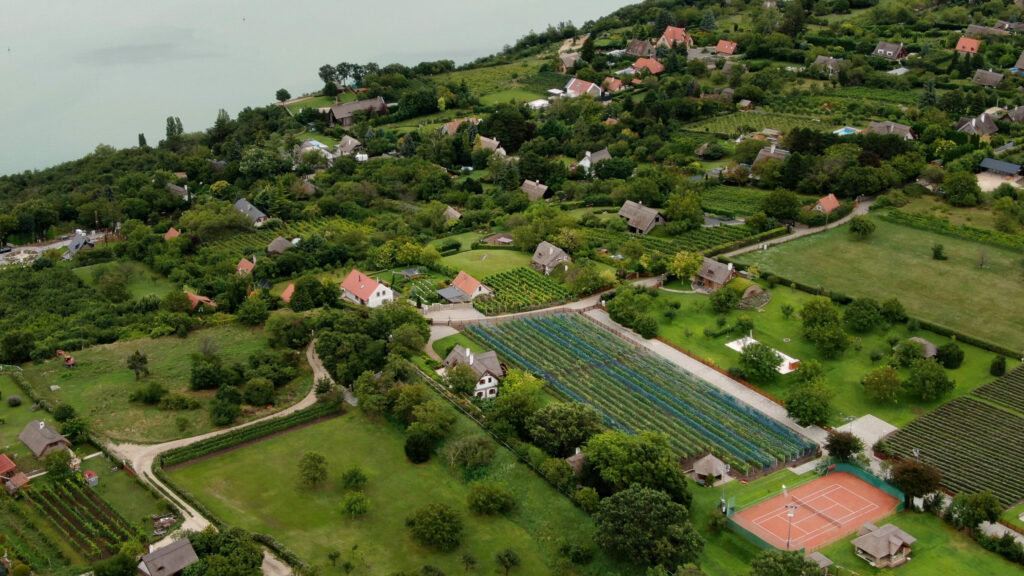
We can’t pass by the plough and vineyard, which attracts attention with its interesting hay dryer, somewhat reminiscent of a tennis court. It is owned by T.E. and also has a beneficial interest for Dr. József Tóth. The beneficiary of the 4 4331 square metre property co-owns a lavender distillery with the municipality of Tihany and even grows lavender himself on about a quarter of a hectare. The Honorary Consul General of Singapore in Hungary was investigated by both the Austrians and the Croats.
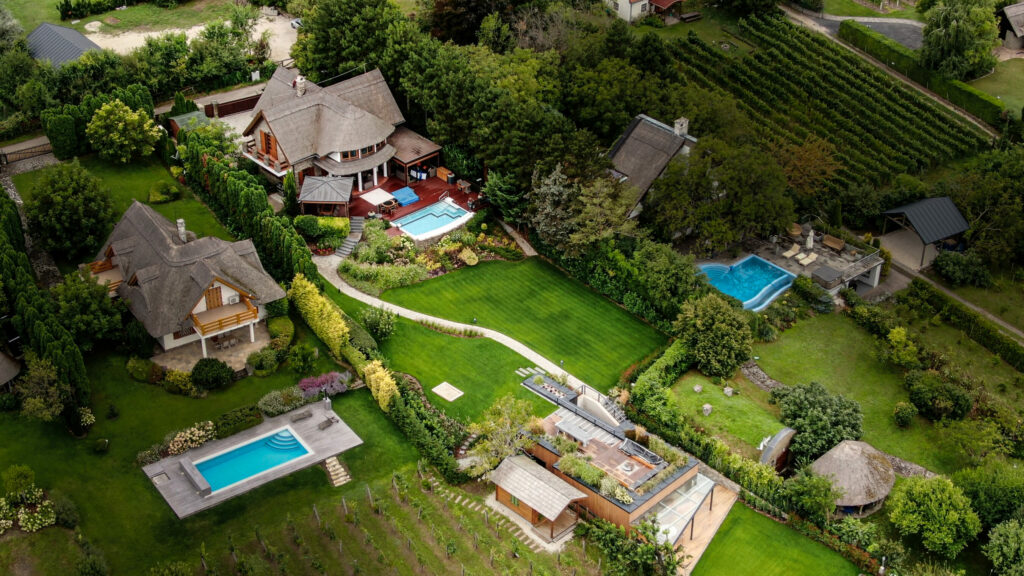
The 1918 square metre garden and farm building would be a wonder at any agricultural fair. György Tamás Erdei and E.H. Zs. M. bought the garden in 2000. Erdei was formerly the president of the Hungarian Bankers Association and is now the vice chairman of the board of OTP Bank and the managing director of OTP Faktoring Zrt. Chairman of the Board of Directors of the OTP Factoring Group.
Land prices in Tihany are radically different from the national average. The average price of land in Tihany this summer, as determined by the National Chamber of Agriculture on a settlement by settlement basis, was 6,140,000 ft/ha for vines and 2,741,000 ft/ha for pasture, reflecting the usual local average of the previous two years. Of course, the price of the land shown here is inflated by the value of the “farm buildings” on it, which is why you could pay 115,000 ft/nm for an orchard here, while the statistical office data shows that the average price in Hungary is 220 ft/nm. In Középső óvári street, a 2,733 sq m plot of land for sale now – with a full panorama of Lake Balaton – is looking for a new owner for HUF 320 million, while a little further down the road, a plot of land with 3 per cent development potential, also in the countryside, is asking HUF 245 million for 2,865 sq m. These prices imply that the elite is concentrated in one place.
444.hu also dealt with the same topic in their article this week: statues of Agars guard the roundabout at the Mészáros’ new residence in Tihany, according to a photo report. The renovation and extension of the property, officially classified as a “meadow and farm building”, began in 2022. Recent photos show three buildings, a swimming pool, a private roundabout (with a fountain and two greyhound statues in the middle), an artificial stream, and a rock garden.
Translated by Zita Szopkó. The original, Hungarian version of this story was written by Zsuzsa Zimre and can be found here. Photos and video by our reader.

